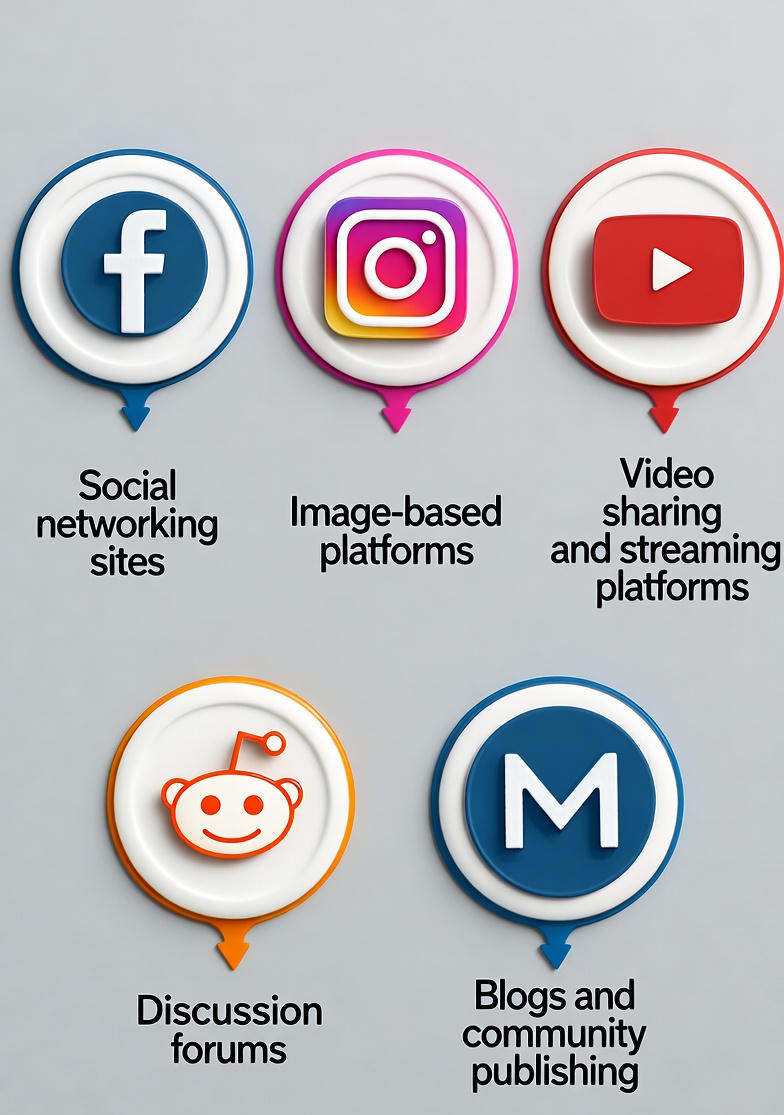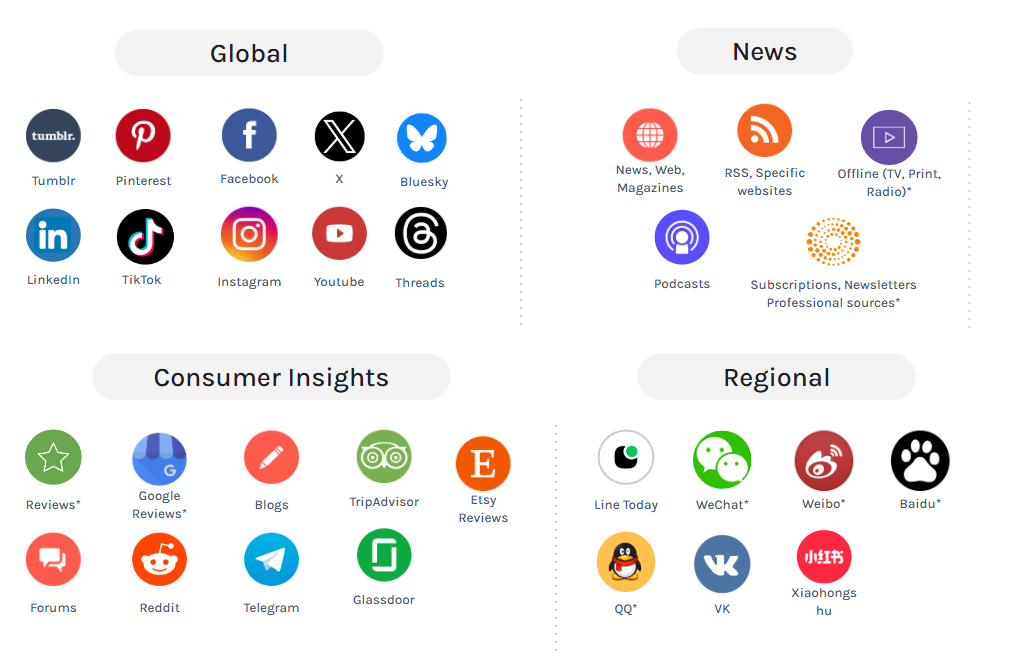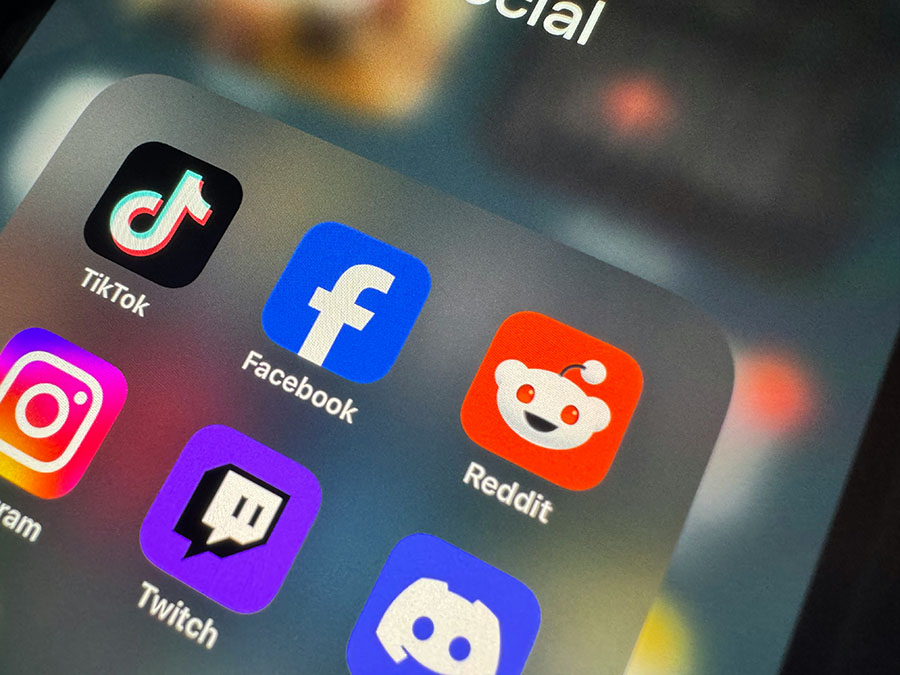Social media has revolutionized communication, information sharing, and business operations in the digital era. As of 2025, an estimated 5.66 billion people worldwide-over 60% of the global population-use social media platforms, spending an average of 7 hours and 6 minutes per week browsing Social Media.
However, these platforms aren’t one-size-fits-all; they vary widely in purpose, audience demographics, and content focus. Imagine social media as a fleet of vehicles: a sleek sports car excels at speed and thrill (like short-form video apps), while a sturdy truck handles heavy loads (such as in-depth discussion forums). Using the wrong “vehicle” for your business goals can waste resources, but the right one can drive exponential growth.
For businesses, marketers, and content creators, grasping these differences is crucial. In 2025, social media advertising spend is projected to reach $276.7 billion in the U.S. alone, highlighting its role as a powerhouse for customer acquisition and brand loyalty. Misaligning your strategy-such as posting long-form analyses on a fast-scrolling image app-can result in low engagement, akin to speaking in an empty auditorium. Conversely, targeted use can boost reach, foster communities, and convert followers into customers.
This guide delves deeper into the ecosystem, exploring definitions, types of Social Media Platforms, strategies, and more, updated with 2025 statistics and real-world examples.
Table of Contents
Key Takeaways
What Exactly Is Social Media? A Definition
The Five Primary Categories of Social Media Platforms
Choosing the Right Platforms for Your Business and Maximizing Your Social Media Success
Summary Table: Overview of the Five Social Media Platform Types
FAQs
Key Takeaways for better use of social media
- Diverse Categories Drive Strategy: The five types of Social Media Platforms-social networking, image-based, video, forums, and blogs—each offer unique strengths; align with your audience and goals for optimal results.
- Audience-Centric Approach: In 2025, with 5.42 billion users globally, demographics (e.g., 93% of young adults on YouTube) guide platform selection and content.
- Visual and Video Dominance: Images and videos boost engagement-82% of traffic is visual-making platforms like Instagram and TikTok essential for storytelling and sales.
- Authenticity Over Promotion: Success hinges on value, two-way interaction, and data-driven adaptation; avoid sales-heavy tactics, especially in forums.
- Focus and Measure: Excel on 2-3 platforms rather than spreading thin; track metrics to refine strategies in an evolving landscape.
What Exactly Is Social Media? A Definition
A simple question in appearance, but we sometimes use the term social media to signify social networks and vice versa. So, to build a solid foundation, let’s define social media comprehensively. At its core, social media refers to any digital platform that facilitates the creation, sharing, and exchange of user-generated content in formats like text, images, videos, audio, and live streams. Unlike static websites, these platforms thrive on interactivity: users like, comment, share, and collaborate in real-time, creating dynamic ecosystems.
Key functions include bridging geographical gaps-enabling global connections for personal relationships, professional networking, or activism. They empower democratization of content, where anyone with a smartphone can broadcast ideas, as seen in viral movements like #MeToo or climate campaigns. Community building is another pillar, with niche groups forming around hobbies, professions, or causes. For businesses, social media has evolved into multifaceted tools: marketplaces (e.g., Instagram Shops), customer service hubs (via direct messaging), and data goldmines for insights.
The ecosystem is dynamic; in 2025, emerging trends like AI-driven content personalization and augmented reality (AR) filters are reshaping user experiences. Yet, amid innovations, platforms cluster into five primary categories based on content priorities, user behaviors, and engagement styles. These categories-social networking, image-based, video sharing, discussion forums, and blogging-provide a framework for strategic decision-making.
The Five Primary Categories of Social Media Platforms
1. Social Networking Sites: The Digital Town Squares
Social networking sites are the bedrock of social media, acting as virtual hubs where users connect, converse, and collaborate. With platforms like Facebook (3.07 billion global monthly active users in 2025), LinkedIn (over 1.33 billion professionals), X (formerly Twitter, with 557 million users) and Threads (142 million), these sites prioritize people over content formats (1). They’re like bustling town squares: diverse, interactive, and adaptable.
Their hallmark is versatility–users post text updates, photos, videos, polls, or links seamlessly. For instance, on Facebook, a business might share a product announcement via text, then engage in comments for feedback. This flexibility suits varied audiences: 78% of 30-49-year-olds use Facebook, while LinkedIn dominates B2B with 60% of users aged 25-34.
Business benefits abound. Bidirectional communication fosters relationships; a quick DM response can turn a complaint into loyalty. Analytics tools reveal demographics (e.g., age, location) and behaviors, enabling hyper-targeted ads-Facebook’s precision targeting reaches users based on life events like job changes. Communities thrive via groups: a fitness brand might host a 10,000-member group for workout tips, boosting retention.
Challenges include algorithm changes and privacy concerns, but successes like Starbucks’ 38 million Facebook followers show how consistent, relatable content builds empires.
(1) Number of users expressed in MAU-Monthly Active Users or Potential Ad Reach for monthly active accounts. Data by Kepios Analysis of Company Statements, Company Advertising resources or data from iiMedia
2. Image-Based Platforms: Where Visual Stories Come to Life
In a visually driven world, image-based platforms have surged, with Instagram (2 billion users), Pinterest (578 million), and Snapchat (737 million) leading. Humans process images 60,000 times faster than text, making these ideal for quick, impactful storytelling. In 2025, visual content accounts for 82% of online traffic, underscoring their power.
These platforms emphasize aesthetics: Instagram’s grids showcase lifestyles, Pinterest’s pins inspire ideas, and Snapchat’s ephemeral stories add fun. Businesses leverage this for brand narratives-e.g., Nike’s Instagram posts of athletes in action evoke aspiration, driving 229 million followers.
Opportunities include shoppable features: Instagram’s tags enable seamless purchases, shortening the sales funnel. User-generated content (UGC) shines; campaigns like #ShareACoke generate free marketing. Hashtag challenges boost virality, as seen in Red Bull’s extreme sports photos.
For marketers, demographics matter: 76% of 18-29-year-olds use Instagram. Success requires high-quality visuals and authenticity-overly polished content can alienate users seeking relatability.

The Five Primary Categories of Social Media Platforms
3. Video Sharing and Streaming Platforms: The Power of Moving Pictures
Video reigns supreme in 2025, with platforms like YouTube (2.58 billion users), TikTok (1.99 billion), and Twitch (240 million) dominating engagement. Videos are 12 times more likely to be shared than text/images combined, and users spend 1 hour daily on YouTube alone.
YouTube doubles as a search engine-second to Google-with tutorials and reviews. TikTok’s short-form clips emphasize creativity, while Twitch focuses on live gaming streams. Businesses excel here: IKEA’s DIY videos on YouTube position them as experts, amassing views.
Strengths include emotional storytelling (e.g., testimonials showing real joy) and live interactions (Q&A sessions). Ads are potent: YouTube’s TrueView reaches targeted viewers. Short-form trends level the field-small brands go viral with authentic TikToks.
Demographics: 93% of 18-29-year-olds use YouTube; TikTok skews young (65% under 30). Production tips: Focus on value over polish for authenticity.
4. Discussion Forums: Where Questions Meet Answers
Discussion forums prioritize knowledge over personal flair, with Reddit (765 million users-accounts), Quora (400 million) or Discord (200 million) as examples. Structured by topics-Reddit’s 100,000+ subreddits cover everything from r/personalfinance to r/science-these foster collective wisdom.
Anonymity encourages candor: users share unfiltered opinions, providing businesses raw insights. For example, monitoring r/skincareaddiction reveals product pain points.
Participation strategies: Answer queries as experts (e.g., a tech firm on Quora), conduct AMAs (“Ask Me Anything”. It refers to interactive sessions commonly held on platforms like Reddit or Quora), or identify advocates. Avoid sales pitches-communities ban spammers. In 2025, 50% of U.S. adults use Reddit for news/discussions.
Value: Free market research; honest feedback. Challenges: Moderation and negativity require tactful engagement.
5. Blogs and Community Publishing Platforms: Long-Form Content for Deeper Engagement
Platforms like Medium (100 million readers) and Tumblr (135 million blogs) blend social features with in-depth writing, ideal for thoughtful audiences. In 2025, long-form content boosts SEO, with blogs driving 55% of B2B leads.
These allow nuanced explorations: A fintech company on Medium might dissect market trends, building authority. Social elements-likes, comments, reblogs-amplify reach.
Benefits: Establish thought leadership; repurpose content (e.g., blog to video). Communities form via publications, exposing work to niches.
For businesses: Focus on value-driven posts. Demographics: Educated professionals favor Medium.

Onclusive Social Listening Tool: Scanning hundreds of millions of sources (850M+) and billions of mentions (2B+ a months) across all types of social media platforms to protect your brand.
Choosing the Right Platforms for Your Business
Selection hinges on audience (e.g., Gen Z on TikTok), content strengths (visual? Go Instagram), and goals (awareness? YouTube; sales? Pinterest). Prioritize 2-3 platforms for depth. Use tools like analytics for refinement.
Maximizing Your Social Media Success
Once you’ve selected the right platforms, the real work begins: optimizing your presence to drive measurable results. In 2025, with organic reach declining (now at just 5-10% on major platforms like Facebook and Instagram), businesses must adopt sophisticated strategies that blend creativity, data, and technology. Regardless of your chosen categories, several core principles-updated with the latest trends-can elevate your efforts from basic posting to high-impact growth engines.
Embrace Consistency and Branding
Consistency is the cornerstone of social media success. This goes beyond sporadic posts; aim for a regular schedule, such as 3-5 times per week on high-engagement platforms like Instagram or TikTok, and 1-2 times on slower-paced ones like LinkedIn. In 2025, tools like Hootsuite or Buffer integrate AI for scheduling, ensuring posts align with peak audience activity times (e.g., evenings for B2C, business hours for B2B).
Maintain a unified brand voice, visual identity, and messaging across all platforms. For example, use the same color palette, logo variations, and tone-whether witty for a consumer brand like Wendy’s on X or professional for IBM on LinkedIn.
According to a 2025 report, consistent branding increases recognition by 23% and trust by 33%. Develop guidelines: Define your core values, target personas, and content pillars (e.g., education, entertainment, inspiration) to avoid fragmented experiences.
Prioritize Authentic Engagement and Social Listening
Social media thrives on two-way streets. Don’t just broadcast-actively listen and respond. In 2025, social listening tools like Onclusive Social (formerly Digimind) use AI to monitor mentions, sentiments, and trends, helping you spot opportunities or crises early. For instance, if users discuss a product flaw on Reddit, address it transparently to build loyalty.
Engage bidirectionally: Reply to 80-90% of comments within 24 hours, host AMAs, or run polls. Authentic interactions foster communities; UGC (user-generated content) is gold, as it’s 2.4 times more trusted than branded posts (Forbes, 2025). Encourage it with campaigns like #MyBrandStory, then repost with credit. Remember, engagement metrics (likes, shares, comments) correlate with 15-20% higher conversion rates.
Leverage Data, AI, and Experimentation
Track everything. Use built-in analytics (e.g., Instagram Insights, YouTube Analytics) to measure key metrics: engagement rate (aim for 1-3%), reach, click-throughs, and ROI. In 2025, AI-driven insights predict trends-e.g., generative AI in tools like Canva or ChatGPT creates personalized content, boosting efficiency by 40%.
Experiment boldly: Test formats like Reels/Carousels (which drive 2x engagement per Reddit trends) or short videos (still king, per Sprout Social). A/B test captions, timings, and visuals. With organic reach dying, allocate budgets to paid ads-treat social as a “paid channel” (Entrepreneur, 2025), starting with $500-1,000/month for targeted boosts.
Focus on Value, Trends, and Cultural Fluency
Ultimately, be social: Provide value through educational content, entertainment, or solutions. In 2025, trends like cultural fluency (aligning with diverse audiences) and social commerce (e.g., TikTok Shop) are musts. Avoid overt selling; instead, build relationships with storytelling and empathy.
Incorporate emerging tactics: Use AI for personalization, reduce posting volume for quality over quantity, and emphasize video/UGC. Success stories like Duolingo’s viral TikToks show how fun, authentic content yields millions in growth. Approach with generosity-success follows when you prioritize audience needs over sales pitches.
Summary Table: Overview of the Five Social Media Platform Types
| Category | Key Platforms (2025 User Stats) | Primary Content Focus | Business Benefits | Best Practices for 2025 |
| Social Networking Sites | Facebook (3.07B users), LinkedIn (1.3B+), X (557M) | Versatile: Text, images, videos, polls | Relationship building, targeted ads, community groups | Consistent posting, bidirectional engagement, use analytics for targeting |
| Image-Based Platforms | Instagram (2B), Pinterest (578M), Snapchat (900M) | Visuals: Photos, stories, pins | Storytelling, shoppable posts, UGC campaigns | High-quality aesthetics, hashtag challenges, leverage shoppable tags |
| Video Sharing and Streaming | YouTube (2.6B), TikTok (1.9B), Twitch (240M) | Videos: Short-form, long-form, live streams | Emotional connections, tutorials, viral potential | Focus on authenticity, live Q&As, A/B test formats like Reels |
| Discussion Forums | Reddit (765M), Quora (400M) | Topics/questions: Text discussions, AMAs | Market research, expert positioning, honest feedback | Authentic contributions, avoid promotion, monitor for insights |
| Blogs and Community Publishing | Medium (+100M readers), Tumblr (135M blogs) | Long-form: Articles, essays | Thought leadership, SEO boosts, content repurposing | Value-driven posts, join publications, repurpose across channels |
 To explore how Onclusive can help you capture and apply social media insights, book a free demo with our experts today.
To explore how Onclusive can help you capture and apply social media insights, book a free demo with our experts today.
FAQs about categories of social media platforms
What is the most popular social media platform in 2025?
Facebook leads with 3.05 billion users, followed by YouTube at 2.58 billion. Popularity varies by region and age-e.g., TikTok dominates among under-30s.
How do I choose the right social media platform for my business?
Analyze your audience demographics, content capabilities, and goals. Use tools like Google Analytics or platform insights to match-e.g., B2B favors LinkedIn, e-commerce thrives on Instagram.
Are there “emerging” social media platforms to watch in 2025?
Yes, like Threads (Meta’s text-based app) and BeReal (authenticity-focused), plus VR platforms like Horizon Worlds. Monitor trends via reports from specialized agencies.
How can small businesses compete on social media?
Focus on niche platforms, leverage UGC, and use free tools like Canva for content. Authenticity and consistent engagement often outperform big budgets.
What role does AI play in social media in 2025?
AI aids content creation (e.g., generative tools), personalization (recommendations), and analytics (predictive insights), but human touch remains essential for genuine connections.

